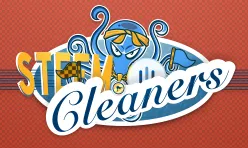
Background
The @steemcleaners team seeks to empower the diverse communities that make up the Steem ecosystem to increase their resilience to abuse. By increasing their abuse resilience, communities will become stronger and be able to achieve their goals.
- Initial 'Empowering Communities' Report posted by @anyx
Abusers often target specific communities to exploit both the good-will of their members and the curation opportunities they present. Community leaders and members are therefore becoming increasingly concerned about abuse.
Numerous communities collaborate with the @steemcleaners team to fight abuse and many have voiced their desire to launch smaller, targeted anti-abuse projects within their communities.
Setting Up Your Community's Anti-Abuse Project
We recommend that you leverage the experience and expertise of the @steemcleaners team when considering the creation of your own anti-abuse project or initiative. Below are general guidelines that will assist you in formulating and preparing for your own anti-abuse project.
The @steemcleaners team is always at the ready to consult with you, collaborate with you, or assist you in whatever way we can.
Set Scope
Be sure to set your scope ahead of launching your project.
- What type of abuse is most important to your community?
- What type of abuse do you feel the most passionate about?
- What type of abuse do you feel isn't abuse at all and you will ignore?
- Are you familiar with all the types of abuse that are prominent in your community and on the Steem blockchain?
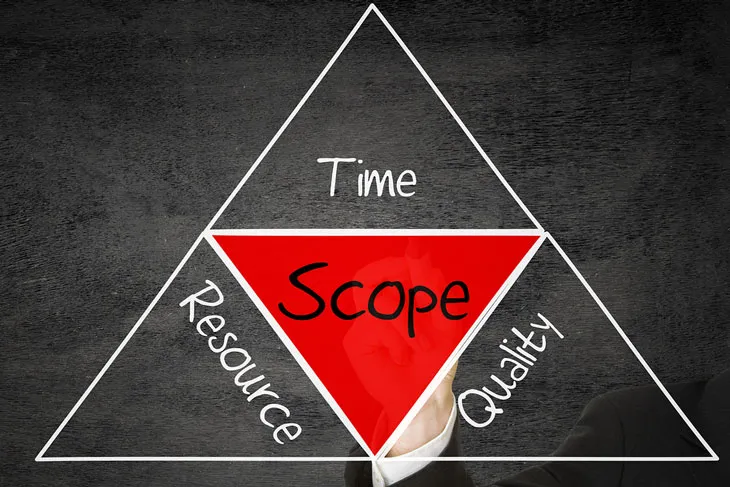
Image source and link to additional resources.
Set Timeline
We recommend that you create a timeline for when your project will start, reach maturity and conclude. You may also want to set an open-ended project and determine the conclusion date at a later time.
- When will you launch it?
- How often will you work on it?
- At what interval will you report your results back to the Steem ecosystem and your community?
Select Team Members
Some projects are run by one person and some are run by a team. The size of the team depends on the project needs.
- Select reliable individuals that can work together as a group without competing or arguing.
- Make sure team members are familiar with the Steem ecosystem.
- Team members should feel comfortable dealing with members of your community and the Steem ecosystem, no matter if they're talking to whales, dolphins or minnows.
Determine Financial Needs
Different projects require different forms of financing. Projects based on various bots will need a server paid for. Projects based on educating members may need funds to reward good behavior through contests.
- What will your server cost?
- What will your website and domain costs be like?
- How much SBD/STEEM will you need to give out?
- How much will delegation cost if you need it?
- Will you need to remunerate your team members somehow?
Determine Collaboration
The @steemcleaners is the largest and most expansive anti-abuse project in the Steem ecosystem. We have the ability and desire to support community-centric and specialized anti-abuse projects where our scope matches.
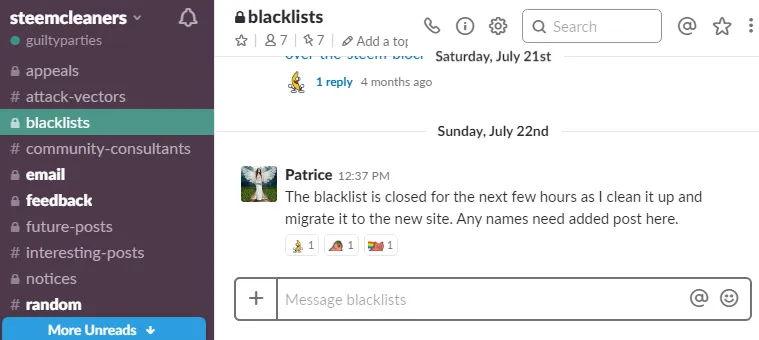
The @steemcleaners internal Slack allows all team members to collaborate.
- Will your project report abusers to the @steemcleaners?
- Will your project have a two-way dialogue with the @steemcleaners?
- Will you need the @steemcleaners to process the abusers that your project discovers?
- Do you see yourself working with other projects, such as @steemflagrewards?
- Are you familiar with all the other projects?
Setup Tools
Your project may need a separate channel set up in your community Discord or a new account registered.
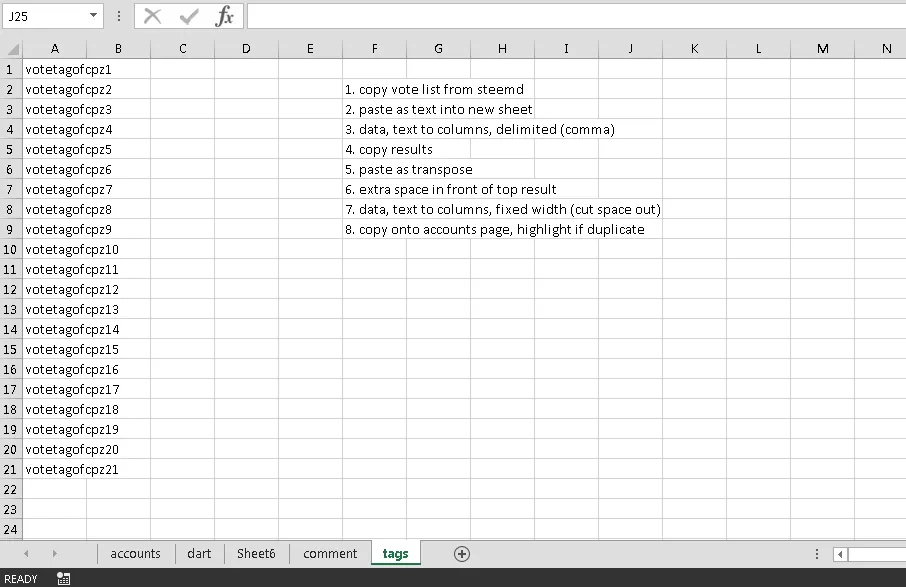
Example of an Excel spreadsheet from a faucet abuse investigation.
- Do you know how to register a new Steem account yourself?
- Did you set up your server how you wanted?
- Have you written the scripts that you needed?
- Did you format your Google Drive, Excel spreadsheet, Dropbox, or anything else that you'd need to store and share information?
- Who will manage your tools?
Outline Communication
Your project will likely need to report back to your community members somehow or to the Steem ecosystem in its entirety. It will need some way for contributors and for abusers to reach you or your team members.
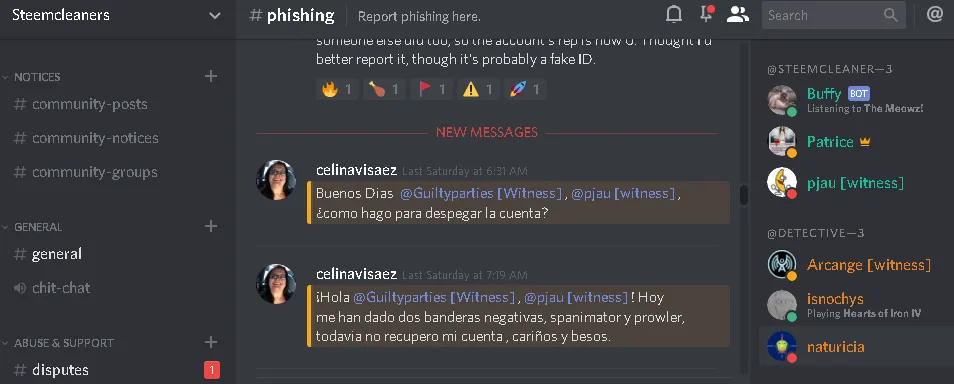
The #phishing channel in the @steemcleaners discord enables phishing victims to reach the team.
- Will you publish regular update posts/reports and reply to comments?
- Will you be available to chat on Discord?
- Will you accept appeals?
- Will you follow up with abusers you made contact with?
- Will you teach users via chat how to participate in your community without abusing?
Determine Readiness
This is likely the most important part of launching an anti-abuse project. All anti-abuse projects take a considerable amount of time and dedication. They also come with a degree of risk. Verbal abuse, malicious flags, retaliatory spam, doxxing, law suit threats, threats to family, death threats, etc are something every abuse-fighter or anti-abuse project owner becomes familiar with.
- Are you prepared to deal with aggressive users?
- What will you do if a user starts threatening or flagging you?
- What will you do when someone gets mad at you and uses language you're not comfortable with?
- What happens if you get on the wrong side of a whale?
- Does your community support your anti-abuse project? (This is something you should ask yourself before initiating it.)
Useful Tools to Have On-Hand
Coherent clearly-formulated list of abuse definitions that fit your project: Those may including things like "submitting made-up reviews" on top of the standard "plagiarism" and "identity theft".
Discord, Slack or another communications method set up and its installation instructions for those who need them. Set it all up ahead of project launch and save yourself a headache.
Group or individual accounts to a Dropbox or similar file repository. For public files such as blacklists, GitHub works well. You should back everything up.
Contact list for collaboration purposes. The list should include members of the @steemcleaners team, owners/managers from other communities that may overlap with yours or from useful projects like DTube, other anti-abuse project team members, etc. @Steemcleaners Discord
Software required to operate and manage any servers or websites your project uses. If you SSH into your server to run your bots, you may need a copy of Putty and instructions on how to use it.
Example Project
The #Introduceyourself Tag Spammers Project ran for a period of several months in 2017. It was created by the @guiltyparties team. For the purpose of providing an example, we'll break it down below.
The scope of the project revolved around #introduceyourself (and subsequently #steemit)tag abuse. Every Saturday it ran a to pull a list of users who used the #introduceyourself tag excessively. The results were processed into a post, creating a transparent list of users.
The users that were abusing the #introduceyourself tag then had their blogs checked over and received a friendly reminder that what they were doing is wrong.

This is the friendly reminder that was posted in their comments.
The idea was that through awareness, abuse of the #introduceyourself tag would decrease week to week. The timeline was set in weekly intervals, with Saturday being the main day of action, and the project aiming to last no longer than 6 months.
To function, this project required the use of several tools: SteemData (now defunct), a small server to process the query and the written query itself, Excel to set up the metrics, and the friendly graphic. The financial cost was absorbed by the team.
Users that were commented on typically responded positively. All of the communication was done via comments. In cases where deliberate abuse or identity theft was found it was reported to the @steemcleaners team to support collaboration.